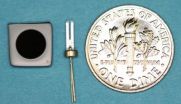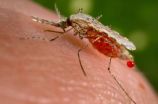(Press-News.org) Those who experience persistent sleep problems after a divorce stand to suffer from more than just dark circles. They might also be at risk for potentially harmful increases in blood pressure, a new study finds.
A growing body of research links divorce to significant negative health effects and even early death, yet few studies have looked at why that connection may exist.
Divorce-related sleep troubles may be partly to blame, suggest the authors of a new study to be published in a forthcoming issue of the journal Health Psychology.
"In the initial few months after a separation, sleep problems are probably pretty normal, and this is an adjustment process that people can typically cope with well," said UA associate professor of psychology David Sbarra, who co-authored the paper with two of his former students – lead author Kendra Krietsh and Ashley Mason.
"But sleep problems that persist for an extended period may mean something different. It may mean that people are potentially becoming depressed, that they're struggling with getting their life going again, and it is these people that are particularly susceptible to health problems," Sbarra said.
The study looked at 138 people who had physically separated from or divorced their partner about 16 weeks before the start of the study.
Participants were asked to report on their quality of sleep during three lab visits over a seven-and-a-half-month period, using the Pittsburgh Sleep Quality Index, which takes into consideration sleep issues ranging from tossing and turning to snoring to difficulty falling and staying asleep. Participants' blood pressure also was measured at each of the three lab visits.
Although researchers did not observe a relationship between sleep complaints and blood pressure levels at the participants' first lab visits, they did observe a delayed effect, with participants showing increased systolic and diastolic blood pressure in later visits as a function of earlier sleep problems.
"We saw changes in resting blood pressure were associated with sleep problems three months earlier. Earlier sleep problems predicted increases in resting blood pressure over time," Sbarra said.
In addition, the researchers found that the longer peoples' sleep problems persisted after their separation, the more likely those problems were to have an adverse effect on blood pressure.
"What we found was if you're having sleep problems up to about 10 weeks after your separation, they don't appear to be associated with your future increase in blood pressure," Sbarra said. "However, after 10 or so weeks – after some sustained period of time – there seems to be a cumulative bad effect."
For people who have high blood pressure to begin with, the increase is not to be taken lightly, Sbarra noted.
"Each standard deviation increase in sleep complaints corresponded to a roughly six unit increase in subsequent systolic blood pressure," Sbarra said. "If you're starting at the high average or low hypertensive range, this is a nontrivial bump."
Systolic is the top blood pressure number and measures the pressure in the arteries when the heart beats; diastolic is the bottom number and measures the pressure in the arteries between heartbeats. Normal blood pressure is around 120/80.
Lead study author Krietsh – who began exploring the link between divorce, sleep and blood pressure as part of her honors thesis as a UA undergraduate – suggests that people who have persistent difficulties sleeping after a divorce address the issue by seeking out cognitive behavioral therapy, making daily schedule adjustments that promote healthy sleep, or finding new ways to relax at bedtime.
"If somebody is going through a divorce and unable to sleep, they really need to get some help or it could lead to problems," said Krietsh, who earned her bachelor's degree in psychology from the UA in 2012 and is now pursuing her doctorate in clinical psychology at the University of Florida.
"We are all going to go through something stressful in our lives, whether it's a divorce or something else, Krietsh said, "and this shows how important it is for all of to value sleep and take care of ourselves."
INFORMATION:
The study was funded in part by grants to Sbarra from the National Institute of Mental Health (MH#074637) and the National Institute on Aging (AG#028454 and AG#036895), as well as a grant from the National Institute of Child Health and Human Development (HD#069498) to renowned sleep expert Richard Bootzin, a UA professor of psychology and psychiatry and director of the University's Sleep Research Laboratory. Bootzin consulted with the research team on the study.
The full text of the study is available on request.
Losing sleep over your divorce? Your blood pressure could suffer
2014-07-17
ELSE PRESS RELEASES FROM THIS DATE:
Choosing cheese
2014-07-17
Go ahead and call Rachel Dutton's research cheesy if you must. As far as she's concerned, it's anything but an insult.
A Bauer Fellow at the Faculty of Arts and Sciences' Center for Systems Biology, Dutton and her lab study cheese – or more precisely – the bacteria and fungi that live on cheese, in an effort to better understand how microbial communities form.
After studying 137 varieties of cheese collected in 10 different countries, Dutton has been able to identify three general types of microbial communities that live on cheese, opening the door to using each as ...
Future electronics may depend on lasers, not quartz
2014-07-17
Nearly all electronics require devices called oscillators that create precise frequencies—frequencies used to keep time in wristwatches or to transmit reliable signals to radios. For nearly 100 years, these oscillators have relied upon quartz crystals to provide a frequency reference, much like a tuning fork is used as a reference to tune a piano. However, future high-end navigation systems, radar systems, and even possibly tomorrow's consumer electronics will require references beyond the performance of quartz.
Now, researchers in the laboratory of Kerry Vahala, the ...
Exploiting gastric vulnerability
2014-07-17
Helicobacter pylori infection promotes stomach ulcers and cancer. How H. pylori initially interacts with and irritates gastric tissue is not well understood. An article published on July 17th in PLOS Pathogens now describes that H. pylori rapidly identifies and colonizes sites of minor injuries in the stomach, almost immediately interferes with healing at those injury sites, and so promotes sustained gastric damage.
Smoking, alcohol, excessive salt intake, and non-steroidal anti-inflammatory drugs cause damage to the tissue lining the stomach, and are associated with ...
Genetic blueprint of bread wheat genome unveiled
2014-07-17
This news release is available in French, Japanese, and German.
The genetic blueprint is an invaluable resource to plant science researchers and breeders. For the first time, they have at their disposal a set of tools enabling them to rapidly locate specific genes on individual wheat chromosomes throughout the genome. Jorge Dubcovsky, Professor at the University of California Davis, USA, says that these results "have been a fantastic resource for our laboratory. The development of genome specific primers, which used to take several weeks of work, can now be done ...
New study shows how existing cropland could feed billions more
2014-07-17
MINNEAPOLIS / ST. PAUL (July 18, 2014) Feeding a growing human population without increasing stresses on Earth's strained land and water resources may seem like an impossible challenge. But according to a new report by researchers at the University of Minnesota's Institute on the Environment, focusing efforts to improve food systems on a few specific regions, crops and actions could make it possible to both meet the basic needs of 3 billion more people and decrease agriculture's environmental footprint.
The report, published today in Science, focuses on 17 key crops ...
New potential way to control spread of insect-borne disease
2014-07-17
A cross-disciplinary team is calling for public discussion about a potential new way to solve longstanding global ecological problems by using an emerging technology called "gene drives." The advance could potentially lead to powerful new ways of combating malaria and other insect-borne diseases, controlling invasive species and promoting sustainable agriculture.
Representing the Wyss Institute for Biologically Inspired Engineering at Harvard University, Harvard Medical School, Harvard School of Public Health, the Massachusetts Institute of Technology (MIT), Boston University, ...
In development, it's all about the timing
2014-07-17
Cold Spring Harbor, NY – Closely related organisms share most of their genes, but these similarities belie major differences in behavior, intelligence, and physical appearance. For example, we share nearly 99% of our genes with chimps, our closest relatives on the great "tree of life." Still, the differences between the two species are unmistakable. If not just genes, what else accounts for the disparities? Scientists are beginning to appreciate that the timing of the events that happen during development plays a decisive role in defining an organism, which may help to ...
Viral relics show cancer's 'footprint' on our evolution
2014-07-17
Viral relics show cancer’s ‘footprint’ on our evolution Cancer has left its ‘footprint’ on our evolution, according to a study which examined how the relics of ancient viruses are preserved in the genomes of 38 mammal species.
Viral relics are evidence of the ancient battles our genes have fought against infection. Occasionally the retroviruses that infect an animal get incorporated into that animal’s genome and sometimes these relics get passed down from generation to generation – termed ‘endogenous retroviruses’ (ERVs). Because ERVs may be copied to other parts of the ...
When is a molecule a molecule?
2014-07-17
Using ultra-short X-ray flashes, an international team of researchers watched electrons jumping between the fragments of exploding molecules. The study reveals up to what distance a charge transfer between the two molecular fragments can occur, marking the limit of the molecular regime. The technique used can show the dynamics of charge transfer in a wide range of molecular systems, as the scientists around Dr. Benjamin Erk and Dr. Daniel Rolles of DESY and Professor Artem Rudenko of Kansas State University report in the scientific journal Science. Such mechanisms play ...
Pitt-led study suggests cystic fibrosis is 2 diseases, 1 doesn't affect lungs
2014-07-17
PITTSBURGH, July 17, 2014 – Cystic fibrosis (CF) could be considered two diseases, one that affects multiple organs including the lungs, and one that doesn't affect the lungs at all, according to a multicenter team led by researchers at the University of Pittsburgh School of Medicine. The research, published online today in PLOS Genetics, showed that nine variants in the gene associated with cystic fibrosis can lead to pancreatitis, sinusitis and male infertility, but leave the lungs unharmed.
People with CF inherit from each parent a severely mutated copy of a gene ...




